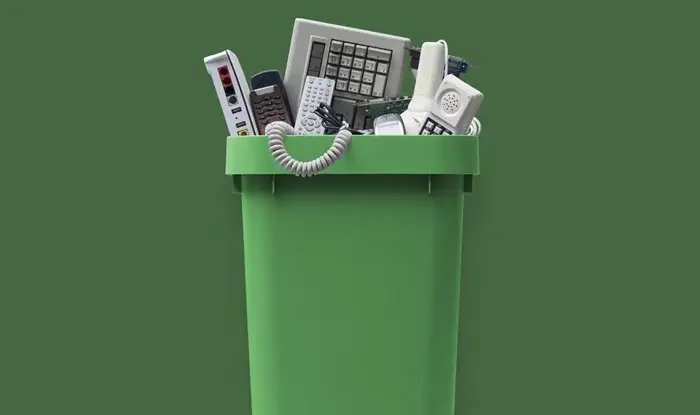As the world becomes increasingly reliant on electronic devices, electronic waste (e-waste) has become one of the fastest-growing waste streams globally. E-waste includes discarded electronics such as smartphones, laptops, televisions, and refrigerators, which contain valuable materials but also harmful chemicals. With millions of devices being discarded each year, e-was
The Environmental Impact of E-Waste
Improper disposal of e-waste can lead to severe environmental consequences. Many electronic devices contain hazardous materials like lead, mercury, and cadmium, which can leak into soil and water, contaminating ecosystems. Additionally, when not properly recycled, valuable metals such as gold, silver, and copper are lost, contributing to resource depletion. Recycling e-waste correctly helps recover these materials, reduces pollution, and minimizes the environmental footprint of electronic consumption.
Advancements in E-Waste Recycling Technology
Technology is revolutionizing the e-waste recycling process, making it more efficient, safe, and sustainable. Modern recycling technologies use advanced machinery, such as shredders, crushers, and air separators, to break down electronic devices and separate valuable materials. These innovations allow for higher recovery rates of precious metals, plastics, and other components.
Additionally, the development of automated systems and robotics has improved sorting accuracy, making it easier to distinguish between recyclable and non-recyclable materials. AI-driven technologies are also being used to optimize recycling processes, ensuring maximum efficiency in the recovery of valuable resources.
The Role of Blockchain in E-Waste Management
Blockchain technology is making strides in e-waste recycling by ensuring transparency and accountability in the recycling process. By tracking the journey of e-waste from collection to disposal, blockchain can help prevent illegal dumping and promote responsible recycling practices. It can also allow consumers and businesses to verify that their e-waste is being recycled ethically and sustainably.
Promoting E-Waste Recycling Through Apps
In addition to technological advancements, mobile apps are encouraging consumers to participate in e-waste recycling. Apps such as “Recycle Nation” and “Call2Recycle” help users find nearby recycling centers and track their recycling habits. These apps make it easier for individuals to responsibly dispose of their old devices, reducing the likelihood of them ending up in landfills.
The Role of Manufacturers and Tech Companies
Tech companies and manufacturers also play a critical role in reducing e-waste. Many are adopting circular economy practices by designing products that are easier to repair, upgrade, or recycle. For example, Apple’s “Trade In” program allows customers to return their old devices in exchange for credit or recycling, ensuring that valuable materials are reused. Companies are also working to reduce the use of harmful chemicals in their products, further improving the recycling process.
Conclusion
E-waste recycling is essential for protecting the environment, conserving resources, and promoting sustainable practices. Thanks to technological innovations in recycling methods, blockchain tracking, and consumer-focused apps, we are taking significant steps toward addressing the growing e-waste crisis. As both individuals and companies embrace responsible recycling practices, we can reduce the environmental impact of our digital world while ensuring that valuable materials are reused for future generations.
te poses a significant environmental challenge. However, technology is playing a crucial role in tackling this issue by improving recycling methods and promoting sustainable practices.




